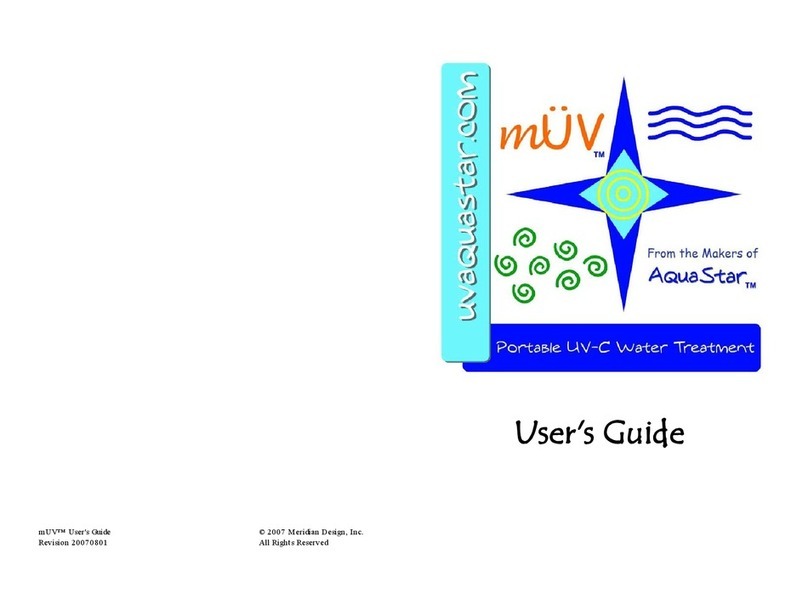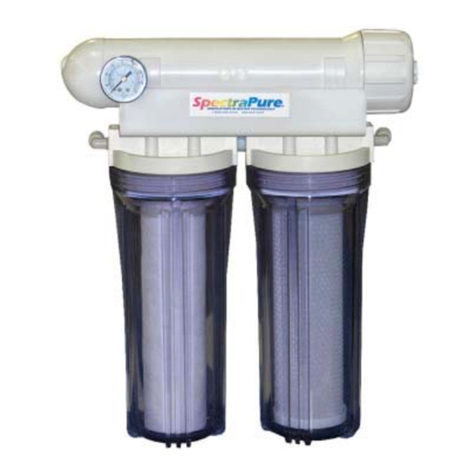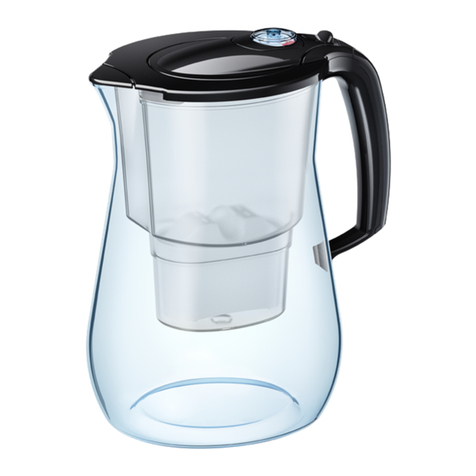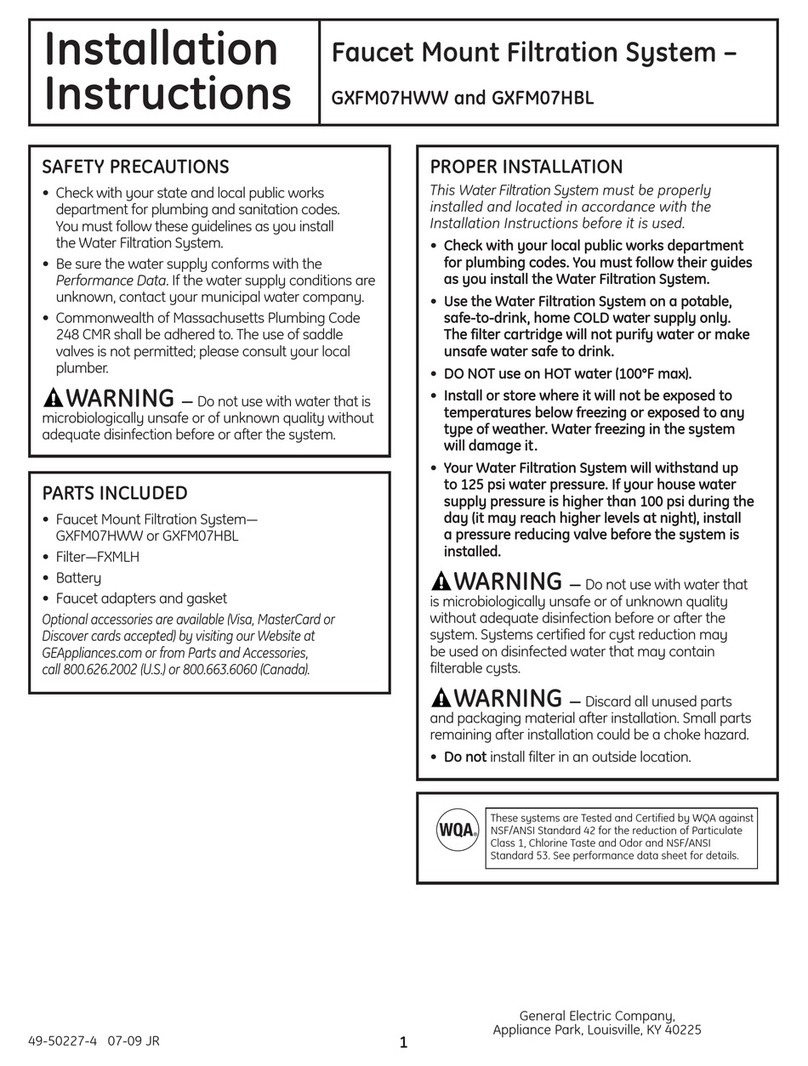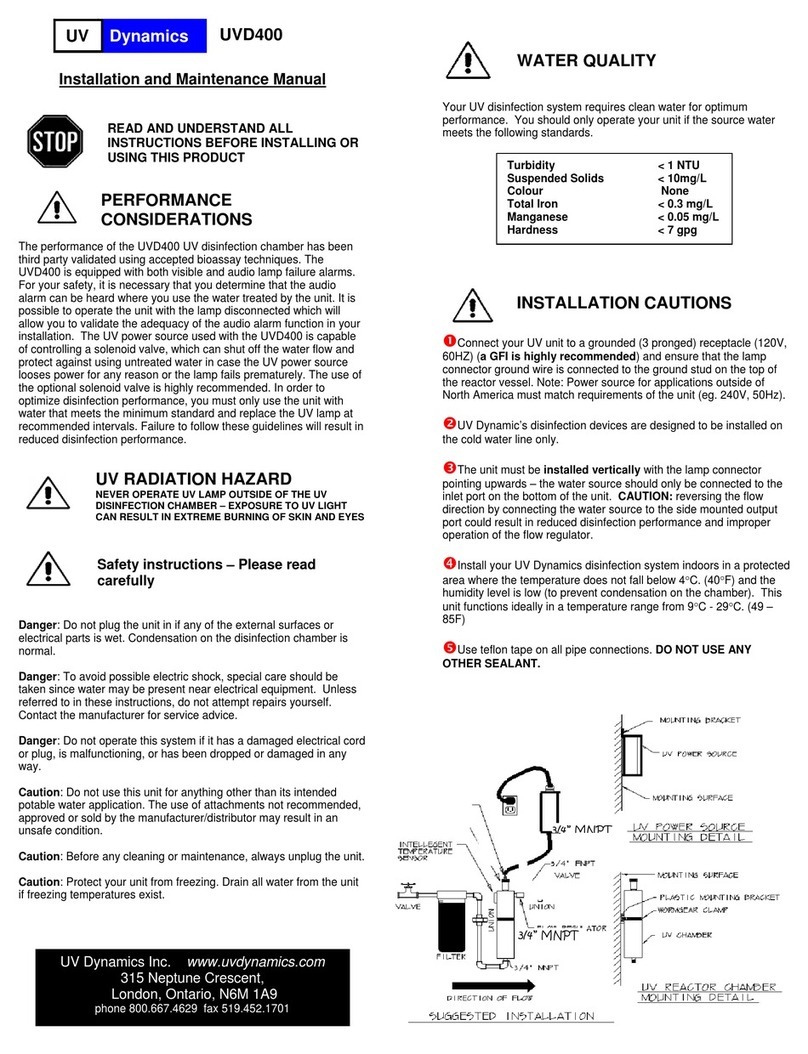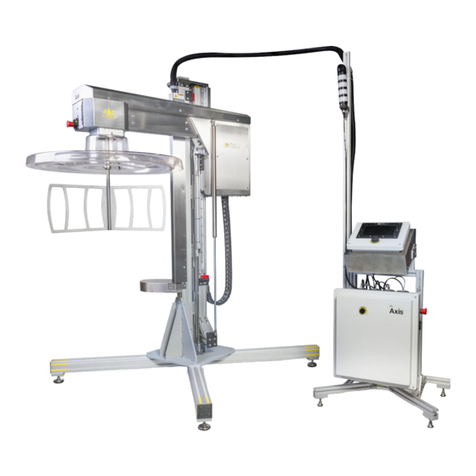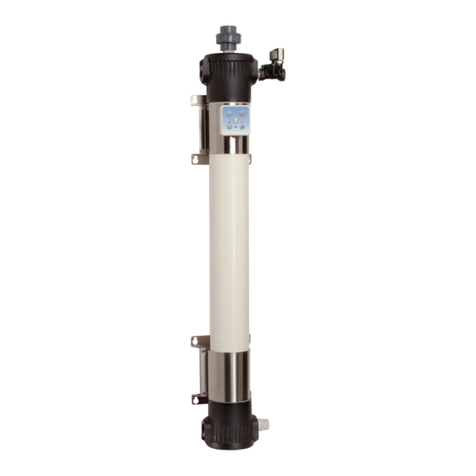Gehmann 588 User manual

Gehmann 568 12-Farben Kombinationslter und 568MC Kombinationslter Multicolor,
Gehmann 546 MC Kombinationslter Multicolor mit Optik
Liebe Schützin, lieber Schütze!
Wir beglückwünschen Sie zum Kauf Ihrer Iris-Diopterscheibe mit integriertem 12-Farben-Filter System und zwei Polarisationsltern aus unserer
Multicolor Serie. Triebfeder unserer Produktentwicklung sind Sie, der Schütze. Wir von der Firma Gehmann haben uns hohe Ziele gesetzt, Ihren
höchsten Ansprüchen gerecht werden zu wollen und Ihre Erwartungen zu übertreen. Wir haben Ihnen zugehört und Ihre
Vorschläge in unsere Produktentwicklung einießen lassen. Für diese Hilfe danken wir Ihnen mit einer Produktfamilie der Spitzenklasse.
Einbau:
Iris-Diopterscheibe so in den Dioper einschrauben und mit dem Maulschlüssel (1) die Kontermutter (2) arretieren, dass das weiße Markierungsdrei-
eck nach oben zeigt.
Konstruktion:
Die extrem kurze, patentierte Iris-Dioperscheibe mit einem erstmals von Gehmann erreichten Verstellbereich von 0,5 bis 3,0 mm besitzt eine
absolut spielfrei gelagerte Iris aus gehärtetem, rostfreien Federstahl. Bei allen eingestellten Durchmesern bleibt die Blendenönung durch
Federvorspannung exakt positioniert. Eine Trepunktverlagerung - auch beim Umstellen auf die mit einer Kugelrasterung versehenen Farbl-
ter - ist also ausgeschlossen. Alle Oberächen - innen wie außen - sind reexmindernd behandelt.
Die Vorteile des Polarisationslters:
Eine häuge Ursache von Zielfehlern sind Streustrahlen, auch Reexstrahlen genannt, die für eine deutliche Kontrastminderung
verantwortlich sind. Ein Polarisationslter schaltet störendes Streulicht aus. Dieser Eekt wird erreicht, da die feinen Quarzkristalle in dem Pola-
risationslter so ausgerichtet sind, dass die Strahlen nur linear in einer Richtung durchgelassen werden. Ihr Vorteil: Ein deutlich klareres Zielbild.
Durch Einschwenken des zweiten Polarisationslters lässt sich zudem die Helligkeit stufenlos von 10 - 90% regulieren.
Warum ein 12 Farben-Filter?
Sinnvoll ist es, die mit dem Polarisationslter erreichte Klarheit und Helligkeit mit einem Farblter zu komplettieren. Künstliche und
natürliche Lichtverhältnisse werden von jedem Auge unterschiedlich wahrgenommen und eingeschätzt. Insbesondere Schützen
mit nachlassender Sehkraft können von einer optimalen Anpassung an wechselnde Lichtverhältnisse protieren. Aus diesem
Grund ist es unseren Entwicklern ein besonderes Anliegen, eine angenehme, bedienungsfreundliche und vor allem eine sich dem Auge
individuell anpassungsfähige Visierung zu schaen. Um den wechselnden Lichtverhältnissen in der Schießhalle und im Freien gebührend
Rechnung zu tragen, haben wir durch die Integration eines weiteren Filterrades auf separater Rastebene sechs weitere Farblter geschaen,
die für ein noch kontrastreicheres Zielbild sorgen. Insgesamt können durch das Zusammenspiel
beider Filterräder 12 Farben und 36 Farbnuancen erzielt werden. Selbstverständlich ist ein freies Zielen, d.h. auch ohne eingeschwenkte
Farblter und Polarisationslter, möglich. Welche Möglichkeiten sich durch die Wahl der einzelnen Grundfarben ergeben und welche Vorteile
daraus resultieren, möchten wir Ihnen im Einzelnen darlegen:
Farben Eekt
mittel- / dunkelgrau 35% + 60% neutrale Lichtabsorption ohne Farbtonveränderung,
amethyst Führt zur Kontraststeigerung im rot/grün Bereich
hell- / mittel-/ Konversionslter, die bei künstlicher Beleuchtung
dunkelblau Tageslichtverhältnisse erzeugen
hell- / dunkelgrün Angenehme Farbe auf Grund der hohen Reizschwelle für das Auge. Blendung wird
reduziert. Die Unterdrückung des Blauanteils führt zu einer Verminderung des Streulichtes.
hell- / dunkelgelb Kantenlter zur allgemeinen Kontraststeigerung bei schwarz/weiß,
Unterdrückung von Streulicht.
orange / rot Kantenlter zur Kontraststeigerung bei schwarz/weiß, Unterdrückung
von Streulicht, Verminderung von Blendeinwirkungen.
(1)
Maulschlüssel
(2)
Kontermutter
(3)
Gewindeadapter
(3a)Optik (4)
Vorschraubplatte
(5)
Pol-Stellring
(6)
Zwischenring
(7)
Pol-Stellring
(8)
Zwischenring
(9)
Pol-Filterrad
(10)
Pol-Filterrad
(11)
Farb-Stellring
(12)Rastring (13)Farb-Stellring (14)Rastring
(15)Farb-Filterrad (16)
Farb-Filterrad
(17)Iris-Körper
Gehmann GmbH & Co. KG • Karlstraße 40 • 76133 Karlsruhe • Germany
www.gehmann.com
Reinigen:
Die Visierung darf nicht geölt oder gefettet werden, nur so kann eingedrungener Staub mit einem weichen Pinsel oder Druckluft leicht entfernt werden.
Iris nur mit Druckluft reinigen, dazu Filter ausschwenken. Filterrad mit einem Mikrofaser-Brillenputztuch reinigen; ggf. wenig Alkohol (Spiritus)
verwenden, aber keine Lösungsmittel! Vorsicht: Der Pol-Filter besteht aus einer kratzempndlichen Kunststo-Folie!
Zerlegung:
1. Iris-Diopterscheibe mit Einblickseite nach unten auf eine saubere Fläche legen
2. Pol-Stellring (5) und (7) im Uhrzeigersinn bis zum Anschlag drehen.
3. Gewindeadapter (3) oder Optik (3a) (bei Modell 546 MC) mit Hilfe des Maulschlüssels (1) gegen den Uhrzeigersinn abschrauben.
4. Iris-Diopterscheibe an den Stellringen festhalten und Vorschraubeplatte (4) gegen den Uhrzeigersinn mit dem Maulschlüssel (1)
abschrauben. Pol-Stellringe (5) mit Markierung (helle Punkte) am Gehäuse übereinstimmen rund abnehmen.
5. Zwischenring (6) abnehmen und Pol-Stellring (7) ebenfalls nach heller Markierung ausrichten und abnehmen.
6. Zwischenring (8) abheben und Pol-Filterräder (9) und (10) mit einer Pinzette aus dem Gehäuse nehmen.
7. Farb-Stellring (11) nach Markierung ausrichten und abnehmen; Rastring (12) abnehmen. Vorgang für Farb-Stellring (13) und Rastring (14)
wiederholen.
8. Farb-Filterrädchen ((15) und (16)) seitlich mit einer Pinzette aus dem Gehäuse nehmen.
Zusammenbau:
1. Iris-Körper (17) mit Einblickseite nach unten auf eine saubere Fläche stellen. Hellen Markierungspunkt auf Richtung 6 Uhr drehen, Filter-
kammer zeigt dann auf 12 Uhr.
2. Farb-Filterrad ((16) mit den Graultern) und Farb-Filterrad ((15) mit den Blaultern) einsetzen. Die Klebetaschen müssen nach unten
zeigen, Markierung (ausgesparter Zahn) auf die Aussparung (ohne hellen Punkt) am Gehäuse ausrichten.
3. Rastring (14) mit der inneren Nase in der Nut bei dem hellen Markierungspunkt ausrichten und aufsetzen. Farb-Stellring ((13) mit den
grauen
Farbpunkten) einsetzen – auf Markierung (helle Punkte) achten.
4. Vorgang für Rastring (12) und Farb-Stellring ((11) mit den blauen Farbpunkten) wiederholen.
5. Beide Pol-Filterrädchen (9) und (10) einsetzen und nach Markierung (ausgesparter Zahn) ausrichten.
Die Filteraussparung muß nach rechts zeigen.
6. Zwischenring (8) mit der inneren Nase in der Nut bei dem hellen Markierungspunkt ausrichten und einsetzen. Pol-Stellringe (7) (Markie-
rungspunkt auf dem oberen Rand) einsetzen; auf Markierung (helle Punkte) achten.
7. Vorgang für Zwischenringe (6) und Pol-Stellring (5) wiederholen. Vorschraubplatte (4) aufschrauben und im Uhrzeigersinn mäßig anziehen.
8. Gewindeadapter (3) oder Optik (3a) bei Modell 546 MC im Uhrzeigersinn aufschrauben und mit dem Maulschlüssel (1) anziehen.
1 2 3a 4 5 6 7 8 9 10 11 12 13 14 15 16 17
1 2 3 4 5 6 7 8 9 10 11 12 13 14 15 16 17

Gehmann 568, 568 MC + 546 MC iris combined 48 colour lter system and polarisation lter set
Dear shooter,
Congratulations! With your purchase of this rearsight iris with integrated twelve colour lter combined polarisation lter you have acquired one of
the top sights available in today‘s market. A signifcantly improved sight picture and hence better scores is designed to encourage you. Your many
suggestions over the years have been more than helpful in our goal to achieve a sight that leaves nothing to be desired. We thank you for your
condence in Gehmann products and wish you many years of success and personal achievement with our sights.
Installation:
Screw the unit into your rearsight and secure the locking collar (2) with the spanner (1) provided. The engraved white triangular mark may be
placed uppermost for reference when setting the iris.
Construction:
Manufactured from tempered spring steel within a xed seating, the patented iris design is adjustable over the larger range of
0.5 mm – 3.0 mm. Adjusting the iris diameter and / or the introduction of any lter will not move the sight plane axis. This ensures
absolute accuracy at all times. Light reection is kept to a minimum by the use of matt surfaces within the iris. To that purpose
the latest technique of sandblasting was used on all internal and external surfaces. Gehmann‘s new line of sights now comes
with an attractive blue and silver nish with 5 external push-t rubber rings for attachment to the iris body to assist eye
centralisation when aiming. Each iris is machine engraved with a serial number and has our 30 year guarantee.
The benets of a polarisation lter:
Deviation of any light beam from the bull or surrounding white, caused by high intensity, can result in a poor or deterioating sight
picture and the inevitable associated dropped shots. Due to the nature of a polarised lter and the fact that quartz grains lay on the lter in one
direction, it is possible with a single lter to absorb these high intensity reected beams. Turn the
second polarisation lter ring until the combination of both provides the required amount of light absorption.This is innitely variable to 90%.
Thus the use of a polarisation lter may signicantly help you control your sighting problem.
What are the advantages of the 48 colour lter system?
Articial and natural light can place a signicant strain on the aiming eye. In order that the aiming eye does not fatigue too rapidly and to help those
with failing eyesight , colour lters were introduced to provide an image with greater contrast. As a result strain can be reduced and higher sight
clarity achieved. Personal preference and diering levels of vision are one more reason we came up with the 48 colour lter system. Each lter
colour was chosen with a particular purpose in mind and ample time was invested in the selection process to accomodate all marksmen from the
beginner to the professional. The simultaneous use of both six colour lter wheels now allows for a total of 12 colours or 36 colour shades. You
are sure to nd the colour shade that is just right for you. Naturally you can also use your new sight without the lters engaged, if preferred. The
following chart is designed to help you understand the purpose behind the choice of each lter colour:
Eect of colour in your sight picture:
light / dark grey neutral light absorption of 35% + 60% without any change in colour,
amethyst enhances contrast in the red-green area
light / mid / conversion lters which use artical light to create natural day light
dark blue
light / dark green a pleasant colour since it reduces excessive irritation to the eye and
keeps glare to a minimum. The suppression of the blue leads to a
signicant reduction of stray light
light /dark yellow enhance the black/white contrast and reduce glare
orange / red enhance the black/white contrast. Stray light is
suppressed and hence glare signicantly reduced
Cleaning:
Under no circumstances should oil or medical solvents be used on this product! This helps to remove easily dust with air pressure or a very soft
brush. The iris may be air-brushed after removing the lter rings. Colour lters in turn may be cleaned with an optical microbre cloth or by rinsing
with a small quantity of pure alcohol. Caution: Use care as polarisation lters are made of sensitive plastic!
Disassembly:
1. Place rearsight on clean at surface - viewing end downwards.
2. Turn both polarisation adjustment rings (5) and (7) clockwise as far as will go.
3. Unscrew thread adapter (3) or optic (3a) on model 546 MC with the looking spanner (1)
4. While holding on to adjustment ring (5) unscrew cover plate (4) anti-clockwise using the looking spanner (1)
5. Rotate polarisation adjustment ring (5) until the two light marks align and remove from the body.
Lift o intermediate ring (6). Repeat procedure for the positions (7) and (8).
6. Remove both polarisation lter wheels (9) and (10) using a pair of tweezers.
7. Align colour adjustment ring (11) with mark and remove. Remove index ring (12). Repeat procedure for the positions (13) and (14).
8. Remove both colour lters wheels (15) and (16) with a pair of tweezers from side of housing.
Reassembly:
1. Once again place rearsight-body (17) on a at, clean surface with viewing end downwards.
2. Position the light mark at 6 o`clock with the cut-out of the lter chamber pointing to 12 o´clock.
3. Replace both colour lter wheels ((16) with the grey lters and (15) with the blue lters) making sure
to align notches with recess of housing. Position colour lter wheel (16) with the grey lters in such a way that the space (gap of tooth)
alings with the cut-out of the lter chamber. The yellow lter should be positioned directly to the right of the gap.
4. Replace index ring (14) and align the retaining stud with the cut-out (light mark). Replace colour adjustment ring (13) with the grey colour
dots. Observe the white marks. Repeat procedure for the positions (12) and (11).
5. Replace both polarisation lter wheels (10) and (9) and align with cut-out. The oval-shaped cut-out of the polarisation lter wheels should
be positioned to the right of the notch.
6. Replace intermediate ring (8) aligning it with the marks. Replace polarisation adjustment ring (7) observing the white marks.
Repeat procedure for the position (6) an (5).
7. Slightly screw on cover plate (4) using the locking spanner (1).
8. Replace thread adapter (3) or optic (3a) on model 546 MC with locking spanner (1) clockwise.
(1)
locking spanner
(2)
looking collar
(3)
thread adapter
(3a)
optic
(4)
cover plate
(5)
polarisation adjustment ring
(6)
intermediate ring
(7)
polarisation adjustment ring
(8)
intermediate ring
(9)
polarisation lter wheel
(10)polarisation lter wheel (11)colour adjustment ring
(12)index ring (13)colour adjustment ring (14)index ring (15)colour lter wheel
(16)colour lter wheel (17)rearsight-body
1 2 3a 4 5 6 7 8 9 10 11 12 13 14 15 16 17
Gehmann GmbH & Co. KG • Karlstrasse 40 • 76133 Karlsruhe • Germany
www.gehmann.com
1 2 3 4 5 6 7 8 9 10 11 12 13 14 15 16 17
This manual suits for next models
2
Table of contents
Languages:

